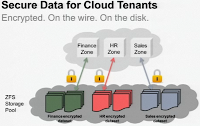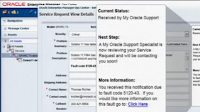Solaris 11: Updated Archive and Linking
Abstract:
Binaries in operating systems need to be identified so the underlying kernel knows how to execute them. Traditionally, binaries were much smaller than data files, so the transition to 64bit operating systems and chips never needed to address huge binaries. A 40 year old 32bit standard, created under AT&T UNIX SVR4, was getting "long in the tooth" and showing it's age. This was finally addressed with with Solaris 11 release.
The History:
An exhaustive document to the Solaris Linker and Library guide is published by Oracle. Solaris was built upon the System V Release 4 Linker Mapfile Format. A short article on the Linux linker from 2002 may be interesting to some. Discussion started in 2009 about enhancing Solaris, while retaining backwards compatibility.
[2009-12-22] PSARC/2009/688 - human readable and extensible ld mapfile syntax
[2010-01-06] Developer describes Solaris SVR4 32 bit Link Editor Map File Issues
[2010-01-07] Developer describes new Solaris Map File Syntax
[2011-11-11] The need for binaries exceeding 32bit lengths
[2011-11-11] Developer publishes modern archive/linking feature
You can reference the published document from Oracle for a complete listing of Solaris linking features, from Solaris 8 leading up to Solaris 11 Express.
Making Known the Secrets to Network Management. Raising up a new generation of professionals.
Friday, November 18, 2011
Thursday, November 17, 2011
Solaris and Virtualization: KVM and Xen
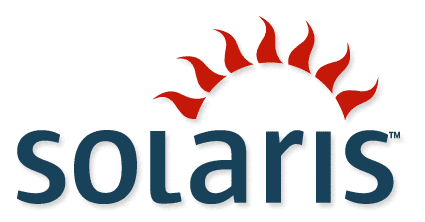 |
| [Solaris Logo, courtesy former Sun Microsystems] |
Solaris and Virtualization: KVM and Xen
Abstract:
Solaris Intel looked to be a worthy operating system for the Intel marketspace with key technolgy such as ZFS, DTrace, Containers, and Xen. With Oracle's killing of Xen for Solaris 11 Intel, many were concerned that the benefits of Solaris on a server would be lost, without platform virtualization such as Xen. The Open Source Solaris community decided to invest in another technology, bringing true managed services scalability to the internet cloud environment.
What is KVM:
KVM is the traditional acronym for "Keyboard, Video, Mouse" - as in KVM Switch. Unfortunately, some not-so-genius decided to overload the multi-decade old acronym with a new moniker - "Kernel Virtual Machine." The QEMU emulator is used as the foundation for the virtual machine. KVM was implemented to be tightly tied to the Linux kernel, with little attempt to be open and friendly to other system kernels, as was Xen.
Cloud Computing: Joyent
Joyent moved KVM to the cloud with Solaris on their managed services grade SmartOS - encapsulating the finest of today's OS technologies: Zones, ZFS, DTrace, Crossbow. The use of KVM and QEMU within a Solaris Zone securely protects the hypervisor from virtual machine hacking exploits, which would ordinarily result in a disaster under Linux. The use of Crossbow provide for securiy and capping of network resources, through the underlying Solaris OS Kernel, to contain network exploits in the guest operating systems and/or their applicaions. Solaris DTrace provides unprecendeted KVM and guest operating system visibility - which includes cloud analytics from the hypervisor, operating system, middleware, and all the way down to the application layers.
Solaris Intel looked to be a worthy operating system for the Intel marketspace with key technolgy such as ZFS, DTrace, Containers, and Xen. With Oracle's killing of Xen for Solaris 11 Intel, many were concerned that the benefits of Solaris on a server would be lost, without platform virtualization such as Xen. The Open Source Solaris community decided to invest in another technology, bringing true managed services scalability to the internet cloud environment.
 |
| [kvm logo, courtesy linux-kvm.org] |
KVM is the traditional acronym for "Keyboard, Video, Mouse" - as in KVM Switch. Unfortunately, some not-so-genius decided to overload the multi-decade old acronym with a new moniker - "Kernel Virtual Machine." The QEMU emulator is used as the foundation for the virtual machine. KVM was implemented to be tightly tied to the Linux kernel, with little attempt to be open and friendly to other system kernels, as was Xen.
 |
| [Joyent logo, courtesy joyent.com] |
Joyent moved KVM to the cloud with Solaris on their managed services grade SmartOS - encapsulating the finest of today's OS technologies: Zones, ZFS, DTrace, Crossbow. The use of KVM and QEMU within a Solaris Zone securely protects the hypervisor from virtual machine hacking exploits, which would ordinarily result in a disaster under Linux. The use of Crossbow provide for securiy and capping of network resources, through the underlying Solaris OS Kernel, to contain network exploits in the guest operating systems and/or their applicaions. Solaris DTrace provides unprecendeted KVM and guest operating system visibility - which includes cloud analytics from the hypervisor, operating system, middleware, and all the way down to the application layers.
Experiences porting KVM to SmartOS from bcantrill
The porting of KVM to be encapsulated in a Solaris Zone within SmartOS was genius.
The porting of KVM to be encapsulated in a Solaris Zone within SmartOS was genius.
The death of Xen under Solaris at the hands of Oracle was an untimely demise for a great concept - robust cloud computing could have been owned by Solaris, making others vendors look like a cheap knock-offs. While Oracle may have marketed Solaris 11 as the operating system of cloud computing, the real innovation came from Joyent, who implemented a multi-vendor cloud on top of managed services grade OpenSolaris fork, through the port of highly proprietary (operating system specific) KVM. Kudos to SmartOS team! Will HP, IBM, or Dell purchase Joyent for their SmartOS?
Wednesday, November 16, 2011
Enabling VNC in Solaris Express 11

Enabling VNC Under Solaris 11 Express
Abstract:
Open Systems have traditionally been accessed via Command Line. MIT create a fully object oriented, multi-tiered, open source windowing system called X Windows, which was quickly adopted by nearly all computing industry players. While X Windows is well suited for local area network technology, the need for wide area network technology was addressed through several different attempts, such as X11R6 "Broadway" and proxies leveraging compression. A lighter WAN suitable screen display protocol, referred to as Virtual Network Computing (VNC) is also commonly used for X displays.
Procedure:
Solaris 10 was shipped with VNC, instructions for enabling VNC under Solaris are found here.
Solaris 11 Express was shipped with a basic VNC service mostly available. The procedure to fully enable VNC under Solaris 11 is as follows:
- Load Gnome Desktop Manager
# pkg install slim_install
- After the ~400mb package is installed note the following issue:
# svcs consolekit
STATE STIME FMRI maintenance 1999 svc:/system/consolekit:default
The GDM depends on the console-kit-daemon for "defining and tracking users"
(console-kit-daemon man page). A generic error will occur telling you that a consolekit dependency is restarting too quickly.
- Check the consolekit dependencies for restarting:
# svcs -d consolekit
online 1999 svc:/system/dbus:default
online 1999 svc:/system/filesystem/local:default
The -r is to recursively enable the daemon and then dependencies in the correct order.
#svcadm disable dbus
#svcadm clear consolekit
#svcadm enable -r consolekit
- A console will need to be provided to the passive VNC X Server through X Display Management Control Protocol.
# vi /etc/gdm/custom.conf
[xdmcp] Enable=truewq
- A restart of the Gnome Display Manager and enabling of Xvnc are the last steps.
# svcadm restart gdm
# svccfg -s x11-server setprop options/tcp_listen=true
# svcadm enable xvnc-inetd
Tuesday, November 15, 2011
Japan and Architecture Independence

Japan and Architecture Independence
Abstract:
For a period of time, there was competition in the area of super computers with varied architectures, with standards based processors like SPARC leading other vendors. Most of the worlds modern super computers have been based upon American Intel based MPP platforms. Intel compatible CPU maker AMD started producing CPU's for supercomputers during recent years. There has also been an aggressive trend to move towards using graphical co-processor units. Most recently, nations have been trying to develop their own intellectual property.
Japan and CPU Architectures:
Japan has been moving towards computing independence by investing in their own implementation of SPARC processor.
[2011-06-20] Japan's Fujitsu creates fastest supercomputer at 8 Petaflops with SPARC64
[2011-11-02] Japan's Fujitsu tops its own fastest supercomputer with 10 Petaflop SPARC64
[2011-11-07] Japan's Fujitsu announces commercial supercomputer with 23 Petaflops SPARC64
[2011-11-21] Japan's Fujitsu 16 core SPARC64-IXfx Details Revealed *updated 11-22*
Conclusion:
It has long been concluded the Intel owned the Super Computer market, before vendors with GPU started to compete. With Japan's Fujitsu corporation, it is clear that the market is no longer going to be dominated by proprietary Intel architecture, but companies developing Open Architectures like SPARC will begin to compete again, as they did in the 1990's.
Monday, November 14, 2011
Solaris Tab: Solaris 11 Reference Additions
Solaris Tab: Solaris 11 Reference Additions
The following has been added to the Solaris Tab for Solaris 11 Reference information.
Solaris Reference Material
2011-11 [HTML] Solaris 11 Library
2011-11 [HTML] Solaris 11 Administration: Zones and Resource Management
2011-11 [HTML] Solaris 11 Administration: ZFS File Systems
2011-11 [HTML] Solaris 11 Administration: Adding and Updating Solaris Packages
2011-11 [HTML] Solaris 11 Administration: Creating and Managing Boot Environments
2011-11 [PDF] What's New in Solaris 11 11/11
2011-11 [PDF] Solaris 11 Cheat Sheet for Image Packaging System
The following has been added to the Solaris Tab for Solaris 11 Reference information.
Solaris Reference Material
2011-11 [HTML] Solaris 11 Library
2011-11 [HTML] Solaris 11 Administration: Zones and Resource Management
2011-11 [HTML] Solaris 11 Administration: ZFS File Systems
2011-11 [HTML] Solaris 11 Administration: Adding and Updating Solaris Packages
2011-11 [HTML] Solaris 11 Administration: Creating and Managing Boot Environments
2011-11 [PDF] What's New in Solaris 11 11/11
2011-11 [PDF] Solaris 11 Cheat Sheet for Image Packaging System
Friday, November 11, 2011
Happy Last Binary Day!!!
Sadly, this will be the last binary day, in modern history.
01/01/01
01/10/01
01/11/01
10/01/01
10/10/01
10/11/01
11/01/01
11/10/01
11/11/01
01/01/10
01/10/10
01/11/10
10/01/10
10/10/10
10/11/10
11/01/10
11/10/10
11/11/10
01/01/11
01/10/11
01/11/11
10/01/11
10/10/11
10/11/11
11/01/11
11/10/11
11/11/11
Happy Last Binary Day!
01/01/01
01/10/01
01/11/01
10/01/01
10/10/01
10/11/01
11/01/01
11/10/01
11/11/01
01/01/10
01/10/10
01/11/10
10/01/10
10/10/10
10/11/10
11/01/10
11/10/10
11/11/10
01/01/11
01/10/11
01/11/11
10/01/11
10/10/11
10/11/11
11/01/11
11/10/11
11/11/11
Happy Last Binary Day!
Solaris 11: Oracle Launches Cloud OS

Solaris: Oracle Launches Cloud OS
Launch Video:
Oracle launched Solaris 11 on November 11, 2010, with real-time streaming. The replay is available.
Highlights:
Oracle President Mark Hurd opens the Solaris 11 Launch
- Connected Cloud Management
- Zero Overhead Virtualization
This is Zones, formerly Solaris Containers. - Cloud Scale
True linear scalability - 2700 Projects
- 400 innovations
- 750 customers using Solaris 11

Mark Hurd also talks about how Solaris is the #1 UNIX:
- #1 for UNIX shipments for past decade
- #1 for Oracle deployments
- Largest application portfolio breaking 11,000+
- Over 60,000 Solaris Customers
Oracle showed a quick video with various testimonials:
- Solaris customers are aggressive users of technology
Use technology to differentiate their businesses from others - Decrease total cost of ownership (TCO)
Provide high performance and highly scalable engineered solutions - Solaris scales from a single node to multiple nodes
- Multi-threaded architecture
Run more applications and process more transactions with fewer CPU's - ZFS is the core capability to drive use of Solaris 11
Manages large amounts of data, mirrors across chassis - Oracle Non-Global Zones and Oracle RAC
74% reduction in support costs - Compare Oracle SPARC, HP HPUX, and IBM AIX
Competition costs 3x more than SPARC Solaris - Scalability & Securely support dramatic growth

Oracle Executive Vice President John Fowler takes the stage
Talks about Solaris 11
- #1 UNIX, incorporate into cloud deployments, engineer to run Oracle better
- Solaris has more deployments than AIX and HPUX combined
- 11,000 certified independent software vendor applications for Solaris
- Thousands of companies produce software for Solaris
- Cloud level deployment for Solaris
- Operating Systems get better over time as they add capability and features
- Optimized to run all of your applications faster
Solaris runs Everything
- the most critical applications
- tier 2 or tier 3 applications
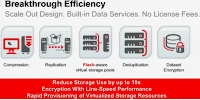
- Kernel Enhancements - Built for next-decade hardware
- hundreds of cores, thousands of threads
- tens of terabytes of memory
- double digit gigabyte network performance
- hundreds of improvements in Solaris
- engineering through the stack provides best performance
- best performance in all application tiers
- engineered for scale
- engineered for high performance applications
- engineered for efficiency in running the oracle stack and other applications


- Virtualization - Designed in virtualization at every layer
- don't build toys, we are not a toy company
- supported, high-service, high-availability, secure mission critical applications
- availability designed at every level, not just a virtual machine - Data - at a cloud
- SAN, NAS, share block devices, share file systems
- common data services in the operating system
- de-duplication, compression, encryption, flash aware storage pools
- move storage services next to application - Security - Engineered Security at Every Layer of System
- Defense in depth
- Multi-tenancy in design
- delegated administration
- robust auditing
- immutable zones
- network & data layer protection
- encrypted data per-tenant - Life Cycle Management - Cloud Deployment
- Cloud repository for packages and patches
- Local repositories, key validated & encrypted
- patch updates in the orders of minutes instead of hours
- fast reboots of zones
- cloned zones with rollback options
- proven Oracle VM templates for Oracle run time applications
- incorporate own software applications into repositories
- rapid and safe deployment and rollback

- Management Story - Hardware, OS, and Application
- Solaris 11 host self-service cloud environment
- Connect to cloud services at oracle
- Ability to manage Oracle applications - Solaris 11 Enterprise Manager Ops Center
- Dashboard for self-service cloud on Solaris 11
- Visibility of clouds, storage, servers, switches, networks, disks, volumes
- Visibility of users, quotas, usage
- Visibility to capacity issues, impending failures, security patches
- Automatic service request creation at Oracle
- Ability to apply patches to thousands of servers at once, according to policy
- OS Level Analytics - Oracle Enterprise Cloud Control Integration
- Ops Center Drill-Down
- Review Analytics correlated to Oracle Application issue
- Update operating system characteristics (i.e. network flow)

Oracle Executive Vice President John Fowler takes the stage for Solaris SPARC updates
- SPARC and Solaris 5 Year Roadmap
- nearly half-complete
- all on-time
- some future products in labs today
- will continue the drum beat of products - Binary Compatibility
- Investment Protection
- No forced migration from Solaris 10 to Solaris 11
- Constant output of activity
- Classic Microprocessor Investment in SPARC
- Adding Enterprise Application Acceleration
- De-Compression added for Oracle RDBMS
- Acceleration for RAC clustering
- Native support for underlying data formats - Solaris 12 will eventually come
- Mark - Strategy for supporting Solaris 11 on SPARC and x86
Will support both!
Solaris moved to x86 to embrace blade market, other UNIX platforms did not - John - Will new updates have to wait until Solaris 12?
No, we provide stability for the customer, new capabilities will arrive in Solaris 11 Update 1 - Mark - What is the most important reason to move from IBM to Oracle?
Speed, Performance, TCO, Supportability, ISV availability, x86 availability, scalability, cloud connectability, steady stream of announcements, performance telemetry, commitment to product set - John - How long will Oracle support Solaris 10
Solaris 1o update coming for T5 & M4, then a 10 year extended support - John - Oracle [RDBMS] is moving to 12c, when will Solaris be called 12c?
Larry runs naming. Oracle RDBMS 12c will be rock-solid on Solaris - John - How secure is data in the cloud?
Most people are not encrypting data in the cloud.
Hardware does encryption at line-speed and wire-speed on the file system, network, and even in Oracle table space with virtually no impact. Oracle offers what no other provider does. - John - De-duplication is a huge improvement potential. How huge?
This is huge, copies are made for data protection and archive, with huge numbers of copies. ZFS at the OS offers dedup and compression. Only OS which includes dedup built in. - John - Many customers are running Java, what makes Solaris good to run Java?
Significant effort into: scheduler, memory manager, networking stack, compiler, observability into JVM, analytic tools - John - Policy question: solaris images on Amazon Elastic Cloud?
Available on OTN for customers, today. Only an hour into launch! - John - Biggest question today.
Life Cycle Management - Cloud accelerates this requirement. Cloud amplifies it, takes away SLA.
Security - substantial technology
Labels:
Ops Center,
Solaris,
Solaris 11,
SPARC,
SPARC T4,
SPARC T5,
T4,
T5
Thursday, November 10, 2011
China and Architecture Independence

China and Architecture Independence
Abstract:
For a period of time, there was competition in the area of super computers with varied architectures, with standards based processors like SPARC leading other vendors. Most of the worlds modern super computers have been based upon American Intel based MPP platforms. Intel compatible CPU maker AMD started producing CPU's for supercomputers during recent years. There has also been an aggressive trend to move towards using graphical co-processor units. Most recently, nations have been trying to develop their own intellectual property.
China and CPU Architectures:
China has been moving towards computing independence by investing in SPARC, MIPS, and ALPHA based processors.
[2008-02-26] - China Ministry of Education joins SPARC designers
[2010-01-10] - China designs MIPS based supercomputer
[2010-11-05] - China builds supercomputer with SPARC service node processor
[2011-10-31] - China designs ALPHA based supercomputer (video)
Conclusion:
It is not a good plan for an aspiring superpower to base their entire nations security on a single computing architecture, never mind a computer architecture which is foreign... or even worse, computing components manufactured exclusively by foreign nations.
Wednesday, November 9, 2011
Solaris Zones: Rapid Application Deployment

Solaris Zones: Rapid Application Development
Abstract:
Many development systems are based upon dedicated hardware infrastructure, which limits the number of simultaneous development releases. With Solaris Zones, multiple application releases can be developed at the same time on a platform, where the developed application is encapsulated, to be moved to test, and rapidly cloned into production.
Description:
Solaris Zones offer the following features:
- isolation
- rapid boot
- built-in rollback
- system mobility
- cloning
A use-case by a telephone carrier is illustrated in the following Solaris Zone presentation.
[html] Solaris Zones Dev, Test, and Deployment Presenation
Additional Information
[html] Solaris Zones, Containers, Resource Management Guide
[html] Solaris Zones Developer Guide
Tuesday, November 8, 2011
Apple: Breaking Free from Google?
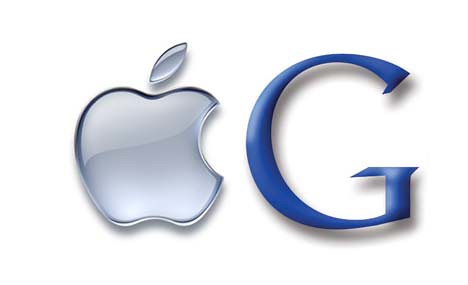
Abstract:
During a time of peace, Google sat on the board of directors of Apple, and there was innovation, profit, and partnership in the minds of both companies. Apple engaged Google to provide network application services such as mapping, then Google betrayed Apple with this inside information. Apple has been trying to break free from Google, ever since.

History:
Apple started conceptual develpment of the iPhone, but Apple had a few gaps. Google sat on Apple's board of directors, so they made a good partner, to inquire about how they could fill some gaps. An agreement was struck, Google would provide mapping, instead of Apple going to other third-party mapping providers like Yahoo, who would not compete with them.
Google used this private information and purchased a development company who owned Android operating system. Google created a parallel development track, for their own Android based smart phone, without Apple's knowledge - the CEO of Google, who sat on Apple's board of directory was engaged in corporate espionage.
Apple released the ground-breaking iPhone, while Google put the finishing touches on their own smart phone. 6 months later, Google released their own smart phone, containing the same features, with a simlar look and feel.
Apple was stuck with having to return back to Google, as their mapping partner, Apple funded Google's mobile mapping through the iPhone revenue, while Google could take Apple's investment to compete with them into the mobile phone market. Google had clearly broken Apple's trust by using inside information from their CEO's participation in the Board of Directors, to gain an unfair competitive advantage to the rest of the market.

Breaking Free:
Google provided Apple with key functionality: mapping.
Unfortunately, mapping is a lot more complex than one might think. Roads are built & rebuilt. Continents shift. Earthquakes happen. Houses are demolished and turned into shopping malls. Farmland is turned into office parks. Progress occurs daily on a world-wide basis.
Apple's movement towards mapping independence started, not long after Google betrayed their business parter:
[2009-10-01] - Apple buys GigaOM "placebase", to gain location information
[2010-07-14] - Apple buys French-Canadian mapping Poly9, to have a world map
[2011-10-31] - Apple buys Sweedish 9to5Mac, to have a 3D world map

Freedom at Last?
The question in everyone's mind should be: when will Apple finally be able to claim freedom from Google, the company who double-crossed them, placing a bullet in Apple's leg, and crippling what could have allowed Apple's innovation to compete fairly in the Smart Phone industry?
Other companies, like Nokia and Symbian, had no chance to compete fairly with Google, who had left them with no way forward. Seeking partnership with Google, who so clearly betrayed Apple, would be likened to "making a deal with the devil" - phone vendors would know that Google would likely later cripple them in a similar fashion (Google stealing intellectual property while holding them prisoner with their own.)
One can only guess when Apple might break free. It might not be, until iPhone IOS 6, since it might take Apple a year to consolidate their 3 purchases over the past 3 years - unless Apple has another acquisition in mind, to surpass the capabilities of Google - the traitor in their midst.
Epilogue
Apple, Nokia, and Symbian were not the only companies crippled by Google's corporate espionage. Sun Microsystems had cooperated with Google with their central processor independant Java platform, with the understanding that Sun would receive license fees for Google's usage of Java in the mobile phones.
In the end, Sun received no license fees, as they did from other mobile vendors (like Motorola.) This placed mobile phone who licensed Java at a pricing disadvantage in the mobile phone arena, with those vendors who used Google's technology... thus encouraging those vendors to switch to Google's technology. Sun Microsystems continued to bleed money, until they were purchased by Oracle. Oracle filed law suits against Google.
Apple filed files law suits against third-party phone vendors, who used Android, in other knock-off Apple products. Google purchased Motorola (mobile phone company), undercutting Oracle's future revenue stream and gaining patent protection for their double-dealing. Sony broke their smart phone partnership with Symbian, who basically created the smartphone market.
When wondering about corporate morality, it is pretty clear - Google did evil...
Monday, November 7, 2011
Solaris Community Changes: genunix

Solaris Community Changes: genunix
Abstract:
When Sun started the process of opening Solaris, they created OpenSolaris, a port of Solaris based upon an open source code base. With the purchase of Sun by Oracle, for all intensive purposes, it appeared that OpenSolaris was dead, but there is still activity in the individual ports as well as the GenUNIX Mercurial Repositories.
Details:
While there may not seem to be a lot of activity in the Solaris Community on genunix.org, the Mercurial Repository shows a different pattern.
While the OS/Net repositories for OpenSolaris seem basically dead, for over a year, the pkg-gate and solaris userland consolidations are still incurring changes.
GenUNIX Mercurial Repositories:
The active respositories, as of October 2011 are as follows
| Name | Description | Contact | Last change |
|---|---|---|---|
| pkg-gate | pkg(5) (aka IPS) repository | Cyril Plisko | 90 minutes ago |
| userland.hg | Solaris Userland consolidation | Cyril Plisko | 2 weeks ago |
| g11n.hg | Globalization (G11N) repository | Cyril Plisko | 3 weeks ago |
| sfwnv.hg | Solaris Freeware repository | Cyril Plisko | 3 months ago |
Of course, there are other places for active Solaris Open Communities to congregate (i.e. illumos), but at least people should be aware of where that there are a lot of changes still happening on genunix.org, even if the home page looks rather stale.
The community is waiting to see what happens, once Solaris 11 is released.
Friday, November 4, 2011
Oracle White Paper: Solaris 10 to 11 Changes

Oracle White Paper: Solaris 10 to 11 Changes
Abstract:
When an operating system is upgraded, there are various new features added and old features removed. With the release of Oracle 11 on November 2011, independant software vendors (ISV's) must be aware of the pending changes.
Details:
Oracle released an ISV Adpotion Guide for vendors moving to Solaris 11. This guide has been updated regularly by Oracle, as new features were added into Solaris 11 Express. It should be considered an authoritative reference for conducting software compatibility testing.
[pdf] September 2011 - Oracle Solaris 11 Express ISV Adoption Guide
Labels:
Solaris,
Solaris 10,
Solaris 11,
Solaris 11 Express
Thursday, November 3, 2011
Virtual Classroom: SPARC T4 Series

Virtual Classroom: SPARC T4 Series
Abstract:
The Information Technology world seems to keep moving, with new developments coming after old. Some cooporative efforts, such as the SPARC community, offer new opportunities from various vendors to compete while the user community reaps the benefits of the varied development tracks. Oracle released the T4 processor a matter of weeks ago. Oracle is presenting in their Virtual Classroom the Next Generation SPARC T4 Systems on Wednesday, November 9, 2011 at 11:00 am PT or 2:00 pm ET.

Summary:
Oracle’s SPARC T4 servers running Oracle Solaris delivers world record performance on a highly scalable secure and integrated platform optimized for enterprise software. With a 5x improvement in single-thread performance, 1TB of memory capacity, and massive system throughput and I/O capacity, the SPARC T4 is ideal for large scale applications, enterprise-wide consolidation and database projects that require extreme reliability, availability and security.
Details:
Oracle provided a basic overview SPARC T4 systems information. Some key features in Oracle's SPARC T4 servers include:
- Built-in Virtualization with Live Migration
- On-chip Cryptographic Acceleration
- Dynamic Threads
Wednesday, November 2, 2011
DTrace: Real Visibility

DTrace: Real Visibility
Abstract:
DTrace was developed by engineers from Sun Microsystems, and leveraged in their Fishworks project, to provide instrumentation for their Solaris 11 based storage system. After many of the original developers were cut from the staff, during the acquisition by Oracle, the DTrace community continued to significant diversify. Real visibility, to running applications and operating systems, is now reaching critical mass through the DTrace diaspora.

Oracle Announcement:
Oracle announced in Cotober 2011 that DTrace was being brought to Oracle Enterprise Linux. This announcement generated much discussion, but the history is fairly significant.
Some History:
There will be no attempt to provide an exhaustive history, but it is important to "travel down the roads least traveled" to gain an understanding of DTrace.
June 17, 2004 - Sun's Adam Leventhal starts work with Solaris DTrace
December 13, 2005 - Sun's Adam Leventhal discusses Solaris DTrace in a Linux Branded Zone
March 3, 2007 - Mailing list discussions regarding DTrace port to FreeBSD
August 2, 2007 - Sun's Adam Leventhal discusses knock-off DTrace copy on Linux
August 6, 2007 - Sun's Adam Leventhal discusses DTrace port to Linux
April 3, 2008 - Crisp developer Paul Fox starts DTrace port to Linux
June 30, 2008 - Sun's Adam Leventhal discusses a firestorm regarding DTrace port to Linux
August 10, 2010 - Oracle's Adam Leventhal departs and joins Delphix
September 23, 2010 - Oracle's Brendan Greg discusses upcoming DTrace Book
October 25, 2010 - Oracle's DTrace developer Brendan Greg departs for Joyent
November 19, 2010 - Oracle's Darren Moffat uses DTrace to better understand ZFS encryption
October 4, 2011 - Oracle announces DTrace for Oracle Enterprise Linux
October 5, 2011 - Delphix's Adam Leventhal discusses Oracle Linux DTrace alpha-beta
October 10, 2o11 - Delphix's Adam Leventhal discusses Oracle Linux DTrace Port issues
October 11, 2011 - Oracle's Wim Coekaerts "kicks the tires" on Oracle Linux DTrace
October 14, 2011 - Crisp developer Paul Fox discusses his DTrace Ubunto 11.10 port
Tuesday, November 1, 2011
Solaris 11: Launch Event

Solaris 11: Launch Event
Abstract:
SVR4 UNIX and later Solaris has been the Gold Standard in telecommunication infrastructure for decades. The latest release of Solaris is about to be launched.
Details:
Don't miss the launch on November 9, 2011 of Solaris 11!
[html] November 9, 2011 - Oracle Solaris 11 Launch Event
Wednesday, November 09, 2011
10 a.m. – 1 p.m. ET
Gotham Hall
1356 Broadway at 36th Street
New York, NY 10018
Subscribe to:
Posts (Atom)

